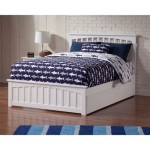Colour Combination for Bedroom Walls
The bedroom is the haven in one's home – a space for relaxation, rejuvenation and repose. The colours adorning the walls of this sanctuary hold immense power in setting the ambiance and dictating the overall mood of the room.
When selecting colour combinations for bedroom walls, consider factors such as the size of the room, the amount of natural light it receives, and the desired atmosphere.
Size of the Room:
For smaller bedrooms, lighter colours like pale blues, greens or yellows create an illusion of space. These hues reflect light, making the room feel more spacious and airy. Darker colours, on the other hand, can make the room feel more intimate and cosy.
Natural Light:
The amount of natural light entering the bedroom significantly impacts the colour choices. Rooms with ample natural light can handle darker and more vibrant hues, while rooms with limited light benefit from lighter and brighter colours that reflect the available light.
Desired Atmosphere:
The intended ambiance of the bedroom should guide the colour selection. Cool colours like blues and greens promote a calming effect, making them ideal for sleep-conducive spaces. Warm colours like reds, oranges and yellows evoke feelings of warmth and cosiness.
Monochromatic Schemes:
Monochromatic colour schemes involve using different shades of the same colour. This creates a harmonious and calming environment that fosters a sense of tranquility. Monochromatic colour combinations can be achieved by pairing a light shade of blue with a darker navy or by blending soft peach with a bold terracotta.
Complementary Colour Schemes:
Complementary colours sit opposite each other on the colour wheel. Pairing these colours, such as blue and orange or green and red, creates a striking contrast that adds visual interest to the bedroom. To balance the intensity, consider using a neutral or white shade as an accent.
Analogous Colour Schemes:
Analogous colour schemes involve using colours that are adjacent to each other on the colour wheel. These combinations, such as blue, blue-green and green, create a cohesive and harmonious look that promotes a sense of restfulness. Analogous colour schemes are particularly well-suited for bedrooms intended for relaxation.
Neutral Colour Combinations:
Neutral colours, such as white, beige, grey and black, provide a versatile backdrop that complements any style or decor. By incorporating accent colours through textiles, artwork or accessories, one can create various moods and atmospheres within the bedroom.
Other Considerations:
Beyond colour, consider the following factors when choosing wall colours for the bedroom:
- Texture: Textured walls, such as those with fabric wallpaper or embossed paint, add a tactile element and visual depth to the space.
- Lighting: Artificial lighting can alter the appearance of colours, so be sure to test the paint colours in the room at different times of the day.
- Personal Style: The ultimate choice of colour combination should reflect your own personal style and preferences. Choose colours that evoke positive emotions and create a space that is truly your own oasis.

Two Colour Combination For Bedroom Walls Best Combinations Sunshine Home Painting Service Blog

The Psychology Of Bedroom Wall Colours

Blue Bedroom Wall Colour Combinations Creating A Serene Sanctuary

10 Must Try Bedroom Colour Combinations For Instant Elegance Nippon

Bedroom Wall Colour Ideas Combination Painting

Two Colour Combination For Bedroom Walls Best Combinations Sunshine Home Painting Service Blog

35 Two Colour Combination For Bedroom Walls Trending In 2024
30 Two Colour Combination For Bedroom Walls In 2024

15 Best Colour Combination For Bedroom Walls In 2024

Best Color Combination For Bedroom Ideas








